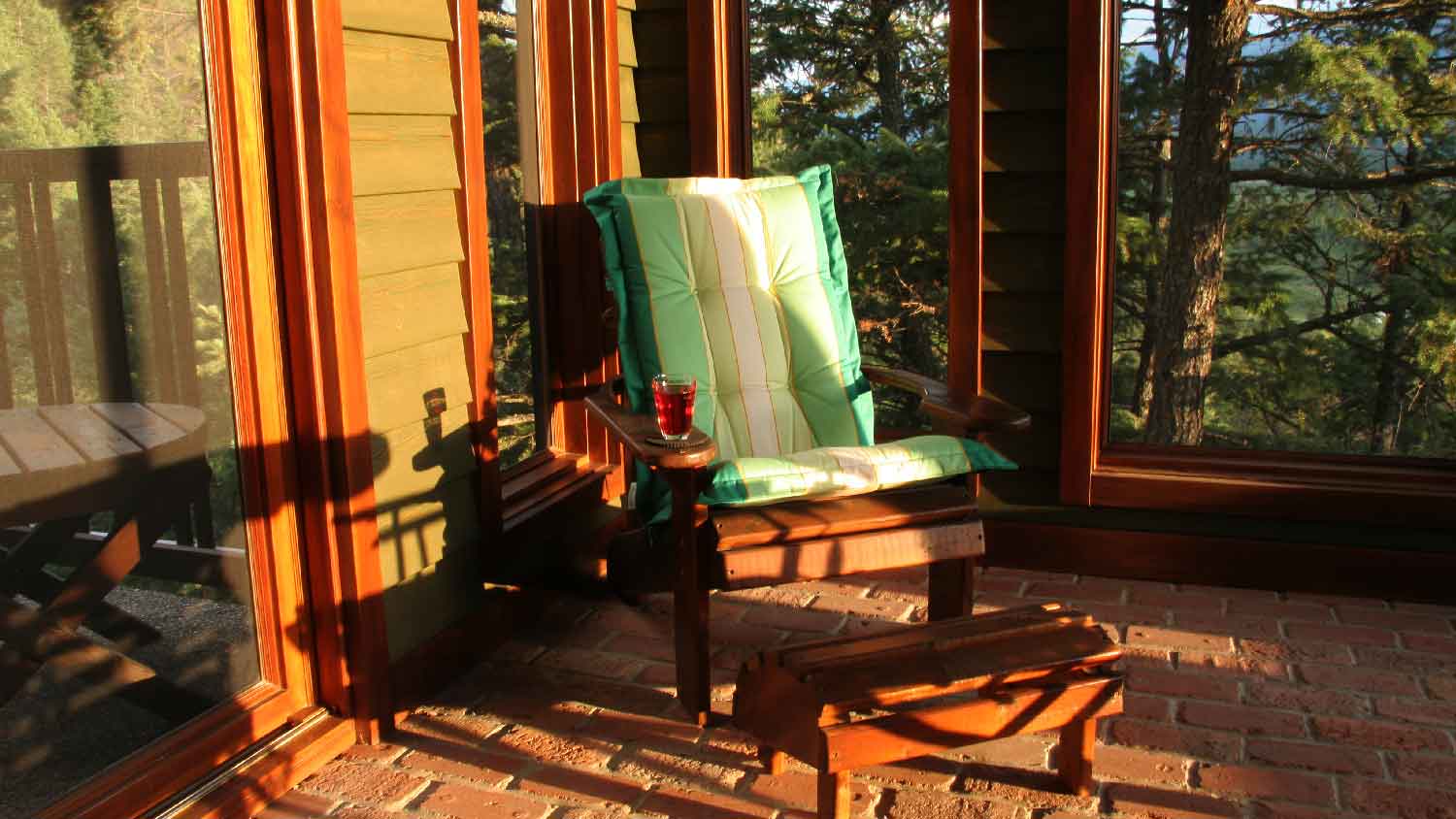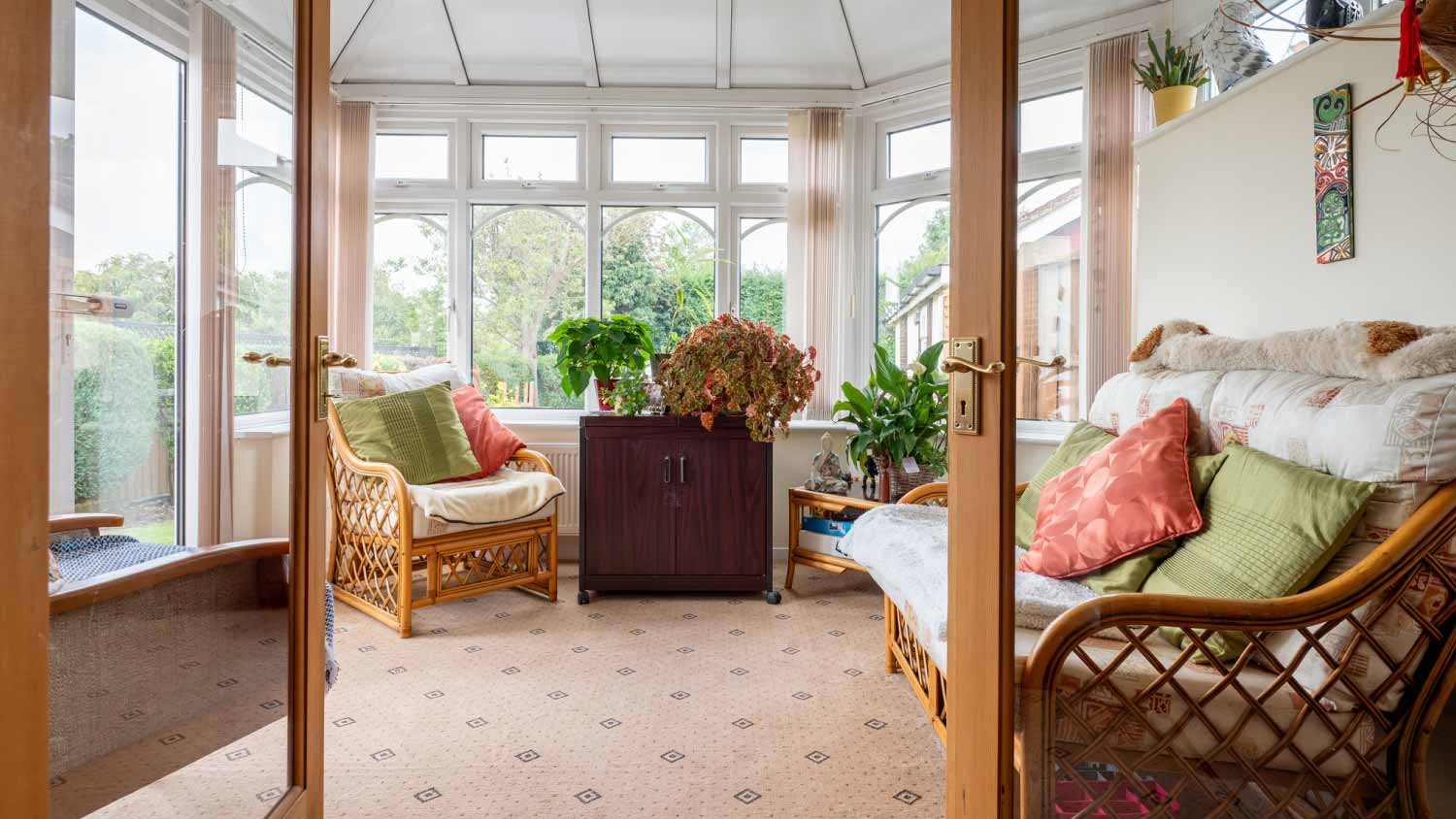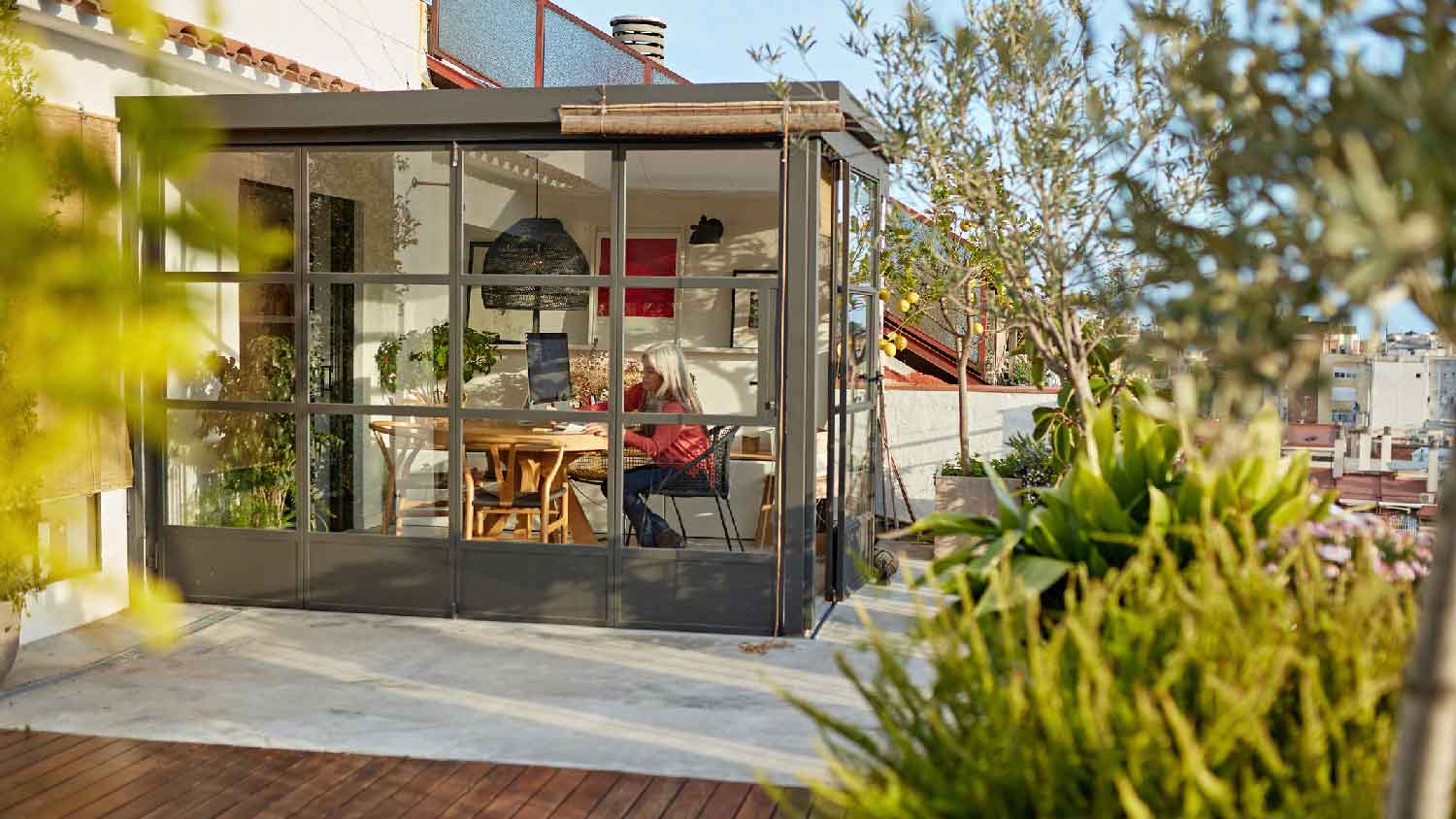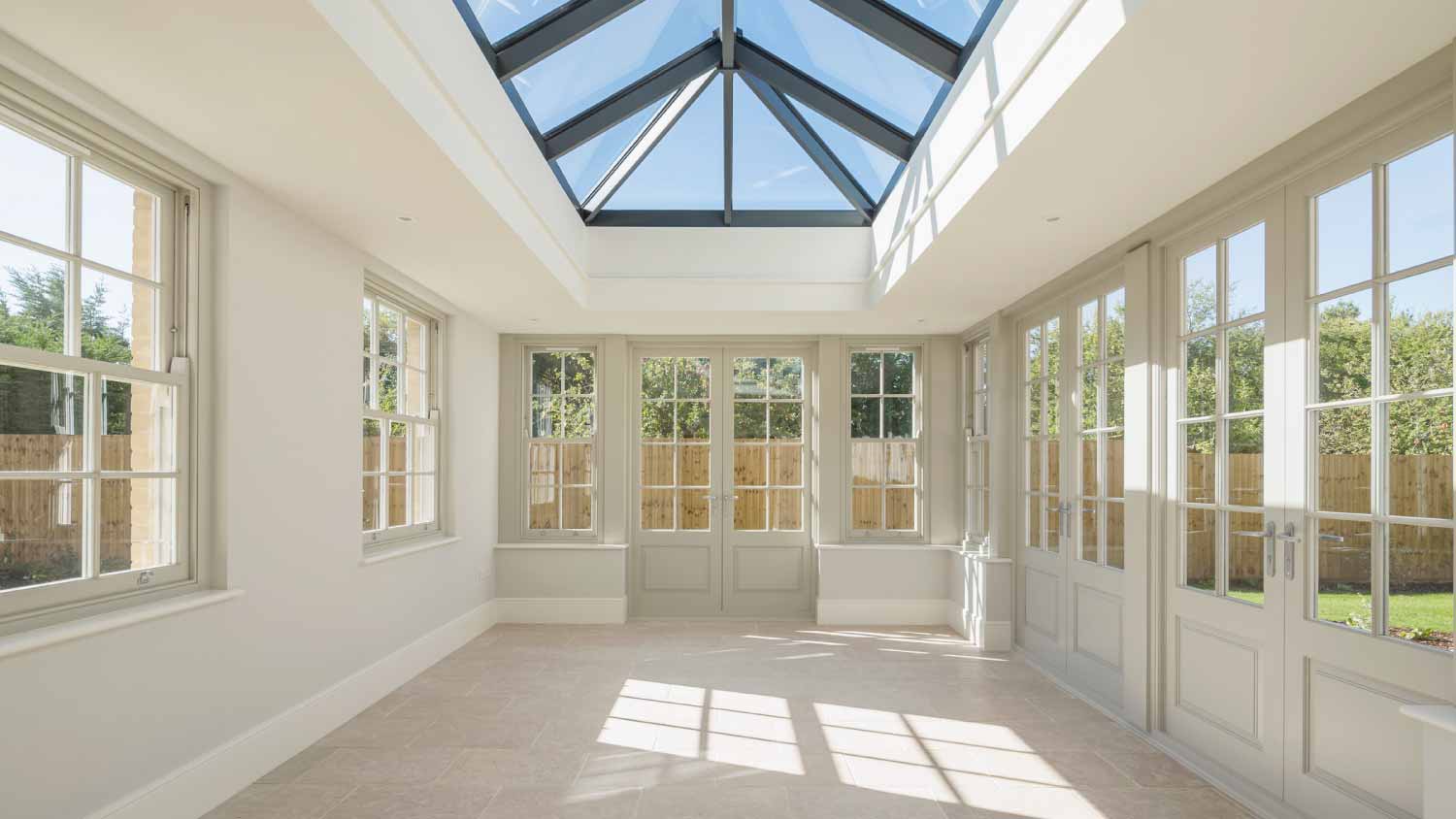
Considering adding a screened porch to your home? Discover the average cost of a screened-in porch, depending on its size, location, and more.
Enjoy the sun, no bugs required


A screened-in porch can help to boost the resale value of your home.
With screens on three sides, they keep pests out while you enjoy the sun.
For areas with harsh winters, a four-season sunroom may offer a better ROI.
You want to enjoy your backyard, but the bugs and drizzle can make it difficult to do so. One option is to add a screened-in porch, where you can relax, bug and rain-free. But you may wonder: does a screened-in porch add value to your home? The answer is, in most cases, this coveted home addition does indeed make your house more valuable. Learn about the return on investment (ROI) of screened-in porches, their pros and cons, and how they stack up against sunrooms.
A screened-in porch is an extension of your home, with a roof and screens on the sides instead of walls or windows. Think of it as a patio, but instead of being exposed to the open air, it has screened-in sides. Instead of drywall or plaster, those sides are covered in a fine mesh screen.
Depending on the size and type of screen, a screened-in porch will help to keep insects and debris from getting onto the porch and ruining your relaxation time.
What you do with your porch is up to you. You may set up outdoor chairs and couches there, transforming it into a lounge area. Or you may add a dining set and enjoy your morning coffee, lunch, or dinner semi-al fresco.
A screened-in porch can boost your home's value and offer an ROI of between 70% and 80%, provided a few conditions are met:
You follow all local codes and the permitting process when installing the porch.
You work with a porch or sunroom contractor near you to build it.
You live in an area with a mild climate, where there's a demand for screened-in porches.
Screened-in porches offer the best ROI in areas where spending time outdoors is appealing, but obstacles, such as flies or mosquitos, can make it challenging. If you're in a sunny, warm area that doesn't see harsh winters, a screened-in porch can be worth the cost.

Screened-in porches and sunrooms serve the same overall purpose—they give you a place to enjoy the outdoors, without being directly outside.
However, there are notable differences between the two. A sunroom may be either three or four-season. A three-season sunroom is enclosed on three sides by clear vinyl or glass, not mesh screens. A four-season sunroom is also enclosed by vinyl or glass and has a separate heating or cooling system, allowing you to use it even in extremely cold temperatures.
Screened-in porches don't often have any additional source of heat. Since the screens let air flow through, they also don't have the greenhouse effect that a three- or four-season sunroom will have.
If you live in a colder climate, a sunroom may add more value to your property than a screened-in porch.
When deciding whether a screened-in porch will add value to your home, it helps to consider the pros and cons of a screened-in porch.
The biggest advantage of a screened-in porch is that it gives you a place to enjoy the outdoors, with some additional protection from pests, rain, and the sun's rays. You can relax with a book without risking sunburn or enjoy a meal without insects as uninvited guests.
A screened-in porch also gives you a bit more living space, making your house feel less cramped.
A notable drawback of a screened-in porch is that, depending on your location, you can't use it year-round. The screens let air in, so it's impossible to insulate the porch for use during a chilly winter. You may also find that the porch becomes too damp to use on rainy days. Screens themselves don't last forever, so you'll need to perform regular maintenance to keep them clean and to repair any rips or tears.
From average costs to expert advice, get all the answers you need to get your job done.

Considering adding a screened porch to your home? Discover the average cost of a screened-in porch, depending on its size, location, and more.

Love soaking up sun but can’t stand the bugs? Learn how much a Florida room addition costs and what factors influence the price to get the best of both worlds.

Homeowners can enclose their porches in a few different ways—each having their own price tag. Learn what contributes to the total cost to enclose a porch and how you can reduce the bill.

Enjoy the outdoors without being exposed to the elements with an Arizona room. Learn what an Arizona room is and why it may be a great addition to your home.

Could your home use a little more light and space? Adding a sunroom may be the right move. Here's what you need to know.

Adding a sunroom is a major construction project that requires a permit. Learn why a sunroom needs a permit and what can happen if you don’t obtain one.